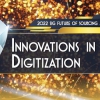Technology has advanced significantly since the days when procurement leaders were only managing RFIs and RFPs among their “little black book” of trusted suppliers. Today, big data and artificial intelligence now offer an expansive view of an entire supplier market and unprecedented access to vast wells of verified data. This advancement has opened the door to a new approach that can completely transform the strength of procurement decisions and enable procurement teams to impact a company’s bottom line in new and sometimes unexpected ways.
With help from powerful analytics tools, procurement is increasingly well-positioned to identify key market trends and opportunities for innovation that can facilitate tremendous business gains. Real-time visibility into the supply chain means data-driven decisions can drive remarkable efficiencies and overall improvements in terms of supplier relationships, cross-discipline collaboration, supply chain management, demand forecasting and overall strategy.
The most sophisticated procurement organizations can even extend into new areas of impact—becoming masters of compliance, supply chain risk, scenario and contingency planning, and corporate sustainability.
Why Transformation Is Always Easier Said Than Done
For organizations that are just beginning (or have not yet begun) their digital transformation of procurement, adopting the solutions that enable enhanced functionality is rarely as straightforward as it may seem. One 2019 CPO Survey found that while 84% of respondents considered digitization to be necessary to improving performance, only 15% of those respondents were taking advantage of tools like machine learning and prescriptive analytic solutions.
Even worse, another survey found that far too many companies that have fully implemented digital technologies like supply chain management, contract management and sourcing, are currently dissatisfied with the results.
That latter observation may be disappointing, but it’s not unexpected. Indeed, unless designed and managed correctly, digital transformation efforts can easily cause just as many problems as they aim to solve. For procurement leaders, the key to success is ensuring that they ask the right questions about their organization and goals. Ideally, leaders would do this before they start evaluating potential solutions providers.
Below, let’s take a look at the essential analysis and considerations that every procurement team should be looking at before they embark upon a digital transformation journey.
>> Digital Disruption in Sourcing and Procurement with Intelligent Automation<<
The First Rule of Digital Transformation: Know Thyself
Far too often, procurement leaders dive headfirst into the search for new solutions and partners without first taking the time to conduct a rigorous evaluation of their needs. Instead of looking at digitization as an agent of meaningful transformation, some leaders can view it more like the proverbial band-aid—a quick fix that they hope will repair, or at least disguise, a dysfunctional or underperforming function.
To be effective, digital transformation must begin with open, honest, and scrupulous self-reflection of your digital readiness by running a maturity assessment of business processes. The better you understand the current state of your organization, the more successful your digital transformation will be. That means:
1. Understand your scope. Exactly which of your existing processes do you wish to recreate with new technology solutions? Which ancillary functions will be affected by this shift? It may seem like an obvious question, but a clear understanding of project scope will help to minimize spend and make rollout more efficient.
After all, a solution can only ever be as good as the vendor’s understanding of the processes they are working to replace. You should also establish a project council consisting of relevant stakeholders who must approve of any changes. This group can help manage scope creep, which is costly and can derail the entire effort.
2. Consider processes end to end. In order to transform a process, you need to precisely understand its gaps. This assessment must also extend to the data behind the relevant procedures. Much of the procurement digitization today is concerned with only baseline functions, and procurement leaders should instead ask what parts are missing from their digital process landscape.
For example, scouting for new suppliers is often manual, but byemploying Artificial Intelligence it can be transformed and have a comprehensive, deeper impact.
3. Determine your functional requirements. Long before your team begins vendor conversations, you should be sure to settle on clear applicable requirements for your project — whether they take the form of a detailed brief or merely a list of specifications. While selecting these, be sure to note which are must-haves versus nice-to-haves to avoid any bad selling. This will enable you to better communicate your expectations and priorities once partner discussions begin so that you can find a solution for your exact needs - without costly and time-consuming customization.
4. Establish workflows and approvals. Define any interactions that a new solution will need to trigger in a downstream system (e.g., purchase order or demand creation). Also, be sure to prepare any standard formats that you work with, such as your category or capability hierarchy, as well as any accounting systems the solution may need to integrate with or even replace.
Here, a RACI (Responsible, Accountable, Consulted, Informed) matrix can be quite helpful. This area can represent a significant area of opportunity - the project of deciding which workflows and approvals must be in place invites you to revisit and simplify key processes and accompanying calculations. For example, those related to material costs versus process costs.
5. Be ambitious. While a classic fit-gap analysis is one option, progressive procurement teams think ahead to what could be revolutionized - what pieces of the puzzle are not yet solved. Many believe, for best results, one must achieve a mix of low-risk and high-risk/high-impact missions. In all cases, ensure you move your organization into experimentation mode and identify cross-functional ambassadors to establish an internal digitalization or innovation lab.
A Promising Start to Your Journey
Conducting the assessments and analysis outlined above will indeed require patience and coordinated efforts on the part of your organization. To be effective, this work should be approached methodically, and procurement leaders must be prepared to shift strategy if they discover that their organization’s needs are somehow different from initial expectations.
However, those who cover all these bases from the outset will be rewarded greatly with a much quicker, impactful and significantly less expensive start to their digital transformation journey. Given the number of organizations that have needed to reboot their approach, it is clear that the right upfront preparation and right partnership choices can lead to game-changing impacts for procurement.







